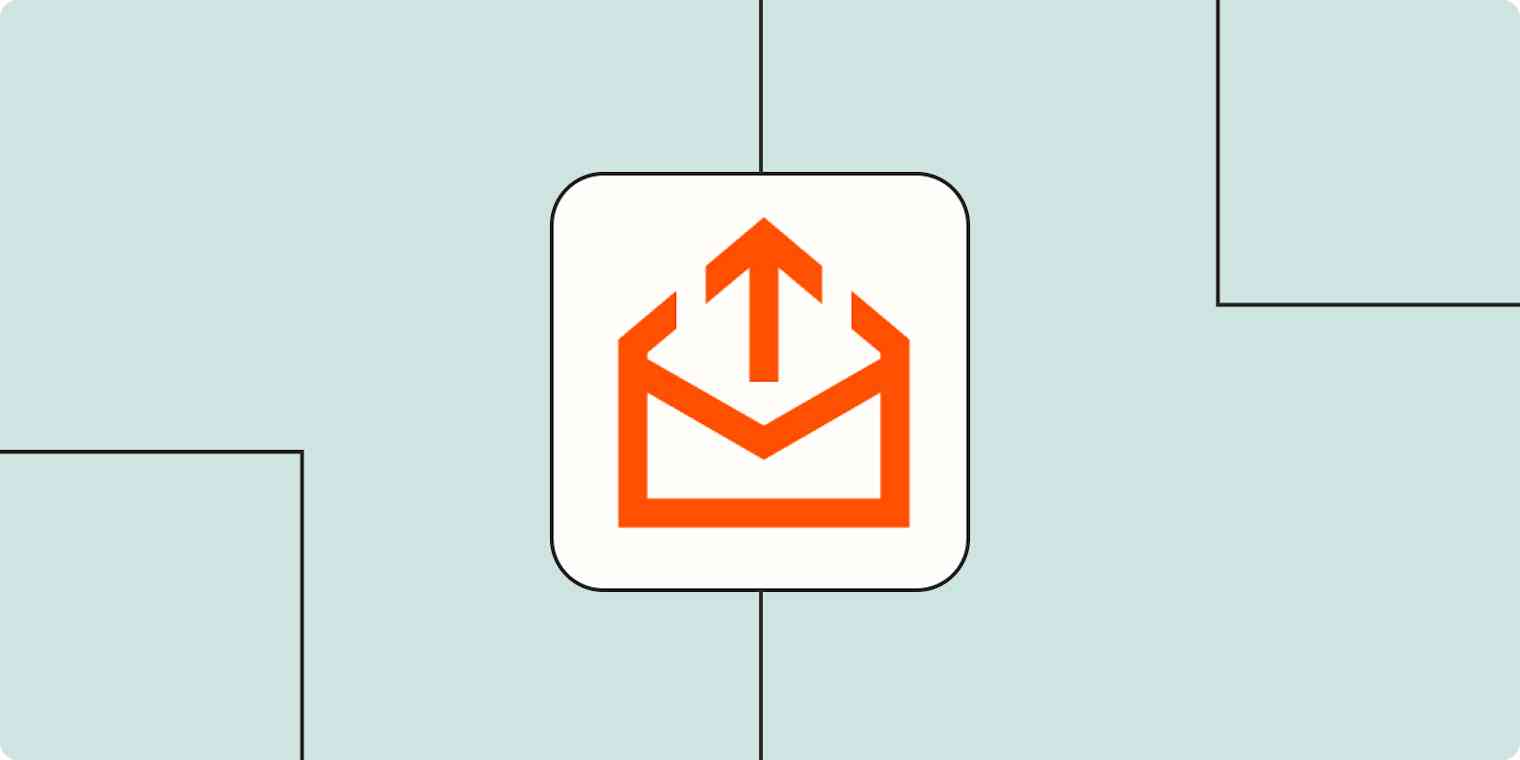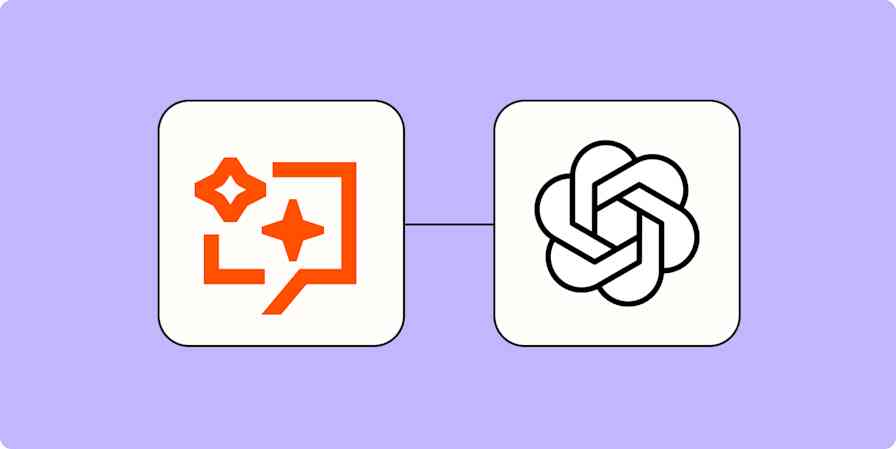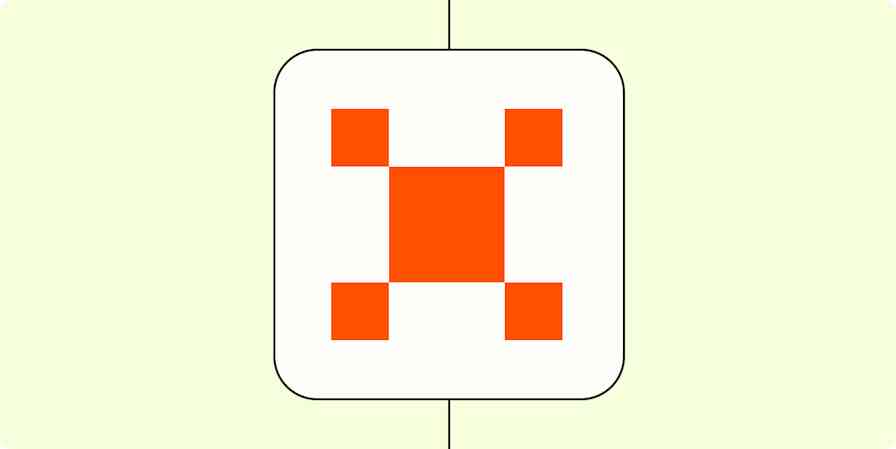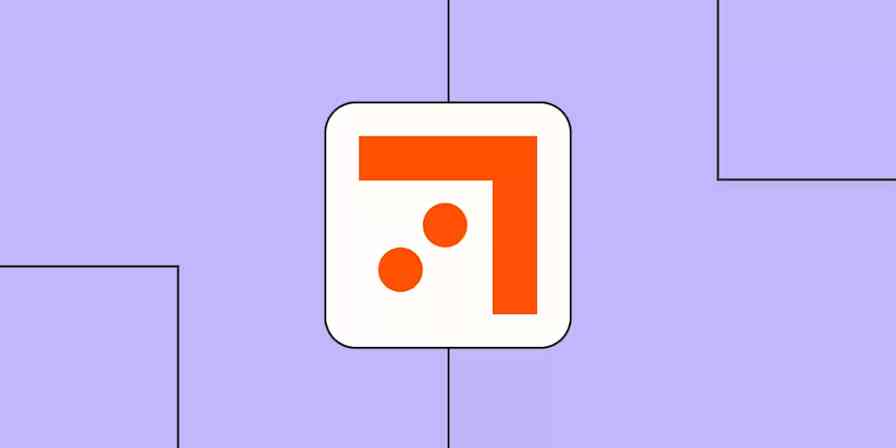In your email inbox, notifications are only more clutter, more things to archive and forget. It would be easier to sort through and manage this information in a spreadsheet or database, but to do that, you'd need to take the time to copy text from emails and paste it somewhere else.
Or, you could let an app do that busywork for you. Here's how to parse text from emails and put their data to good use—automatically.
Zapier is the leader in workflow automation—integrating with 6,000+ apps from partners like Google, Salesforce, and Microsoft. Use interfaces, data tables, and logic to build secure, automated systems for your business-critical workflows across your organization's technology stack. Learn more.
Table of contents
What is an email parser?
When your boss or best friend emails, you likely read every word.
The rest of the time, odds are, you skim the message. Your eyes quickly dart across the screen, picking out keywords and phrases like New Sale and $4.99 and Payment Due: Friday, Nov 3.
Email parsers work the same way. You teach these programs how to recognize patterns in your emails, tell them what data is actually important and that everything else can be ignored, and then have them save only the important stuff. Then, connect the email parser to an automation tool like Zapier to save that important text into other apps so you can log the orders in a spreadsheet, for example, or be reminded to pay your credit card bill tomorrow. As long as the emails are all laid out generally the same way, the email parser should be able to figure out what's important and copy the data for you.
Got that? Ok. Let's back up, and step-by-step build an email parser that can copy text out of your emails and put it to work. We'll use Zapier's Email Parser—a free tool to copy text out of your emails. If you use another email parsing tool, these directions will still apply—the basics work the same in every app, and once you know how to parse one email, you know how to parse them all.
Onwards.
How to parse emails
1. Make a new Email Parser mailbox
The first step is the easiest. Just go to parser.zapier.com, sign in with your Zapier account or make a new account, then click either of the Create Mailbox buttons (indicated with arrows in the screenshot below) to add a new mailbox.

Email Parser will then show you an email address like 2grb3sdr@robot.zapier.com.

Copy that address and keep it handy, because that’s where you’ll need to send emails to be parsed later on.
2. Send an email to the parser
Now that you have the new email address copied, open your email app, find (or write) an email like the ones you want to use with your email parser. I'm going to have Email Parser tell me about new posts on the Zapier Blog (meta, I know), so I’m forwarding a recent email from Deb at Zapier.
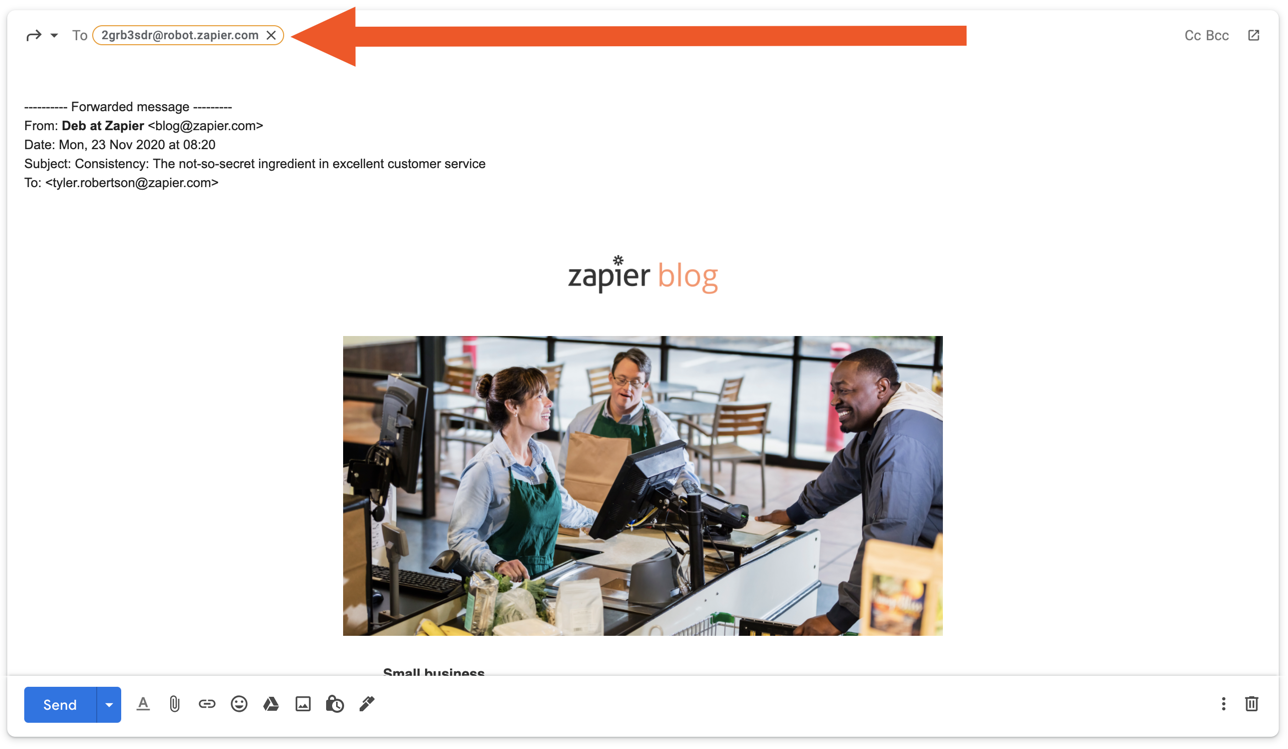
Click the button to forward the email, put your @robot.zapier.com email address in the To: field, and click Send.
3. Teach the parser how to read your email
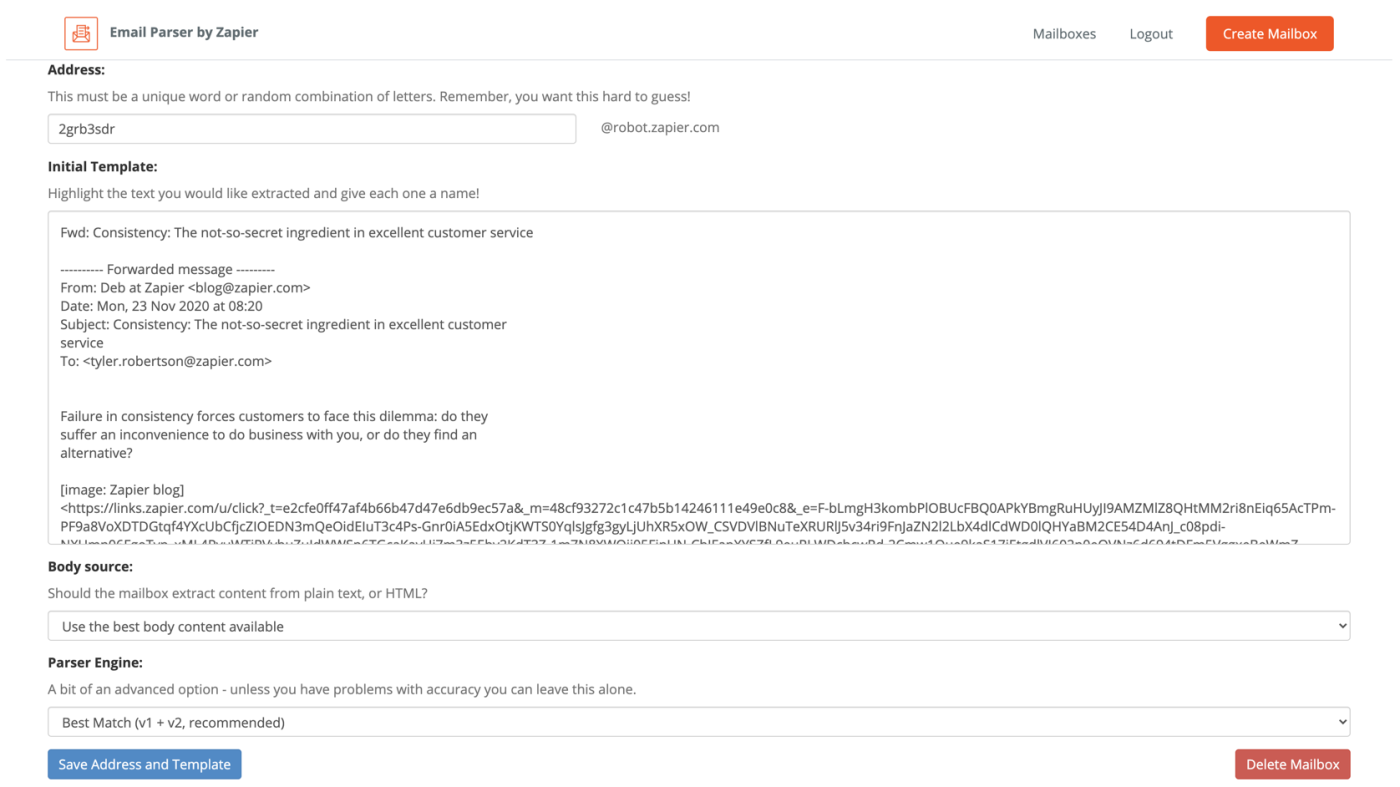
Time to put on your teacher hat. Once Zapier Email Parser receives your email, it shows a text version of your email in the Initial Template box. All you need to do is find the important data and tell the parser that this is what to copy.
Scroll down to the text that you want the Email Parser to copy, and select it. With the email I’ve used, I want to know the headlines under “Recommended reading from the Zapier blog team”, so I select the text from each of those. For each piece of text you select, type a name for that item in the box, and click Save. The Email Parser will replace the text with the name in curly brackets, like {{headline1}}.

Repeat that for each piece of text you want the email parser to copy. I selected each topic, too, and gave each item a unique name.
Once that's done, click the blue Save Address and Template button at the bottom—and your email parser is ready to work.
The email parser will work best if the text you select is something written the same way in every email—perhaps a number after the word Total, or a link written after the word Click here. The value can change, but the email parser will work best if that preceding text is the same and in the same place every time.
Want to make Email Parser more reliable? Forward another similar email to the same address, then click View Emails beside your parser's name in Zapier Email Parser's Mailboxes list to see all of the emails the mailbox has received.

Click Show on one of the items to see the text of the email, with the text Email Parser selected in yellow.
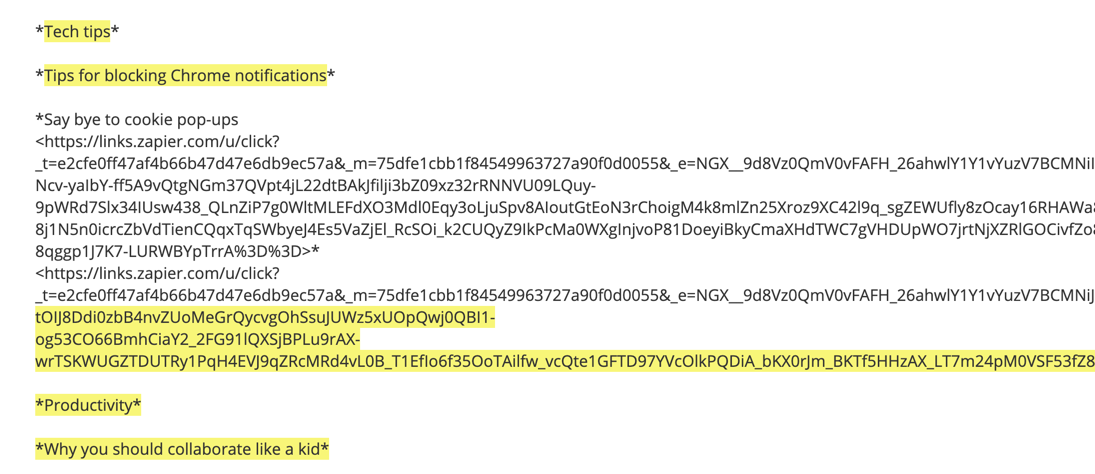
If anything looks incorrect (like in my example above), click the Edit extra template link near the bottom. Select the same text you'd originally wanted to copy from your emails, give it the same names, then save the new template. You can repeat that multiple times to make your parser more reliable.
You can use this same technique to parse any kind of regular email you get. For example, you could teach it to recognize product names and prices in purchase confirmation emails from Amazon or Apple.
4. Automatically forward new emails to the parser
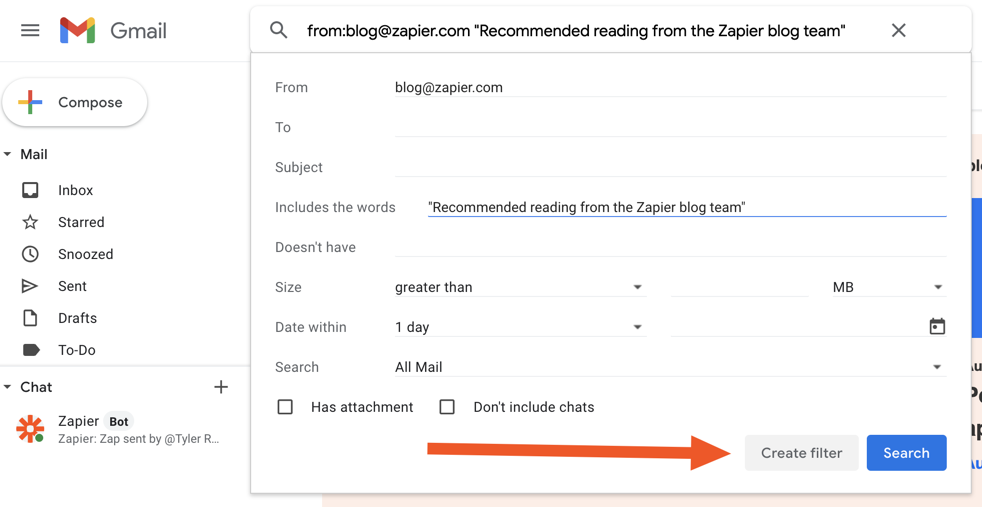
The Email Parser you made is now ready to copy text from other similar emails—the Zapier Blog newsletter, in this case. We need to send every new newsletter to the email parser.
The best option is to automate things with a filter in your email app to automatically forward messages that match the one you sent to Email Parser. Typically, your notification emails will all have something in common—they come from the same sender and often have the same subject. For my example, those emails come from blog@zapier.com and contain the words "Recommended reading from the Zapier blog team."
To watch for those emails in Gmail, you'll first need to add your email parser address to Gmail to automatically forward emails. Here's how:
Open your Gmail Forwarding settings—click the gear icon, select Settings, then click the Forwarding tab.
Click the Add a forwarding address button there.
Enter your Email Parser @robot.zapier.com email in the text box and click next.
Check your email—Zapier should send you a confirmation email from Gmail. If you don't see it, check the Email Parser app's mailbox—it should have the email. Either way, copy the confirmation code, then paste it in the box back in your Gmail Forwarding settings.
Now you can have Gmail automatically forward emails to your email parser. First search for the email address and/or subject of the messages you'll have the email parser process; I'll enter from:blog@zapier.com AND "Recommended reading from the Zapier blog team". Click the tiny down arrow on the right of the search bar to see the full Advanced Search options—then click the Create filter button or link in the lower right corner. Have that filter forward the email to the email parser address you just added—and you should be all set.
After a bit of mouse and keyboard exercise, you're done. Every time Deb at Zapier sends you the latest Zapier newsletter—or whenever you receive whatever other email messages you want to parse—Gmail will send it along to the Email Parser.
If you use another email service, check your documentation to see if your app or service can automatically forward email messages.
5. Put your parsed email data to work
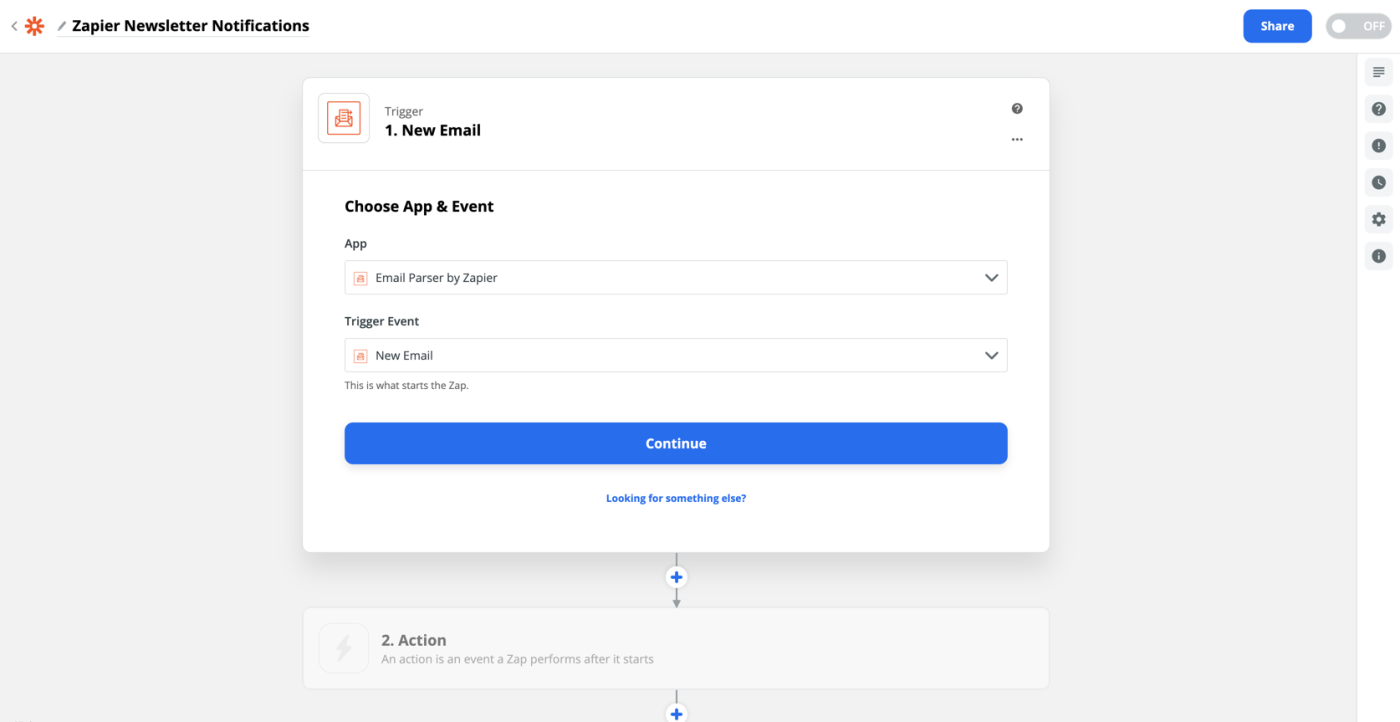
Copying text out of emails alone isn't enough—you need to do something with that data. The easiest option is to connect your Email Parser to Zapier's app automations, which lets you send data from your emails to thousands of other popular work apps—from Airtable to Zoho.
Visit Zapier and log in or sign up if you haven't already. Then click Make a Zap to get started. Select Email Parser as the trigger app, then choose the New Email trigger event. Connect your Email Parser account if you haven't already, and pick the parser address you just set up.
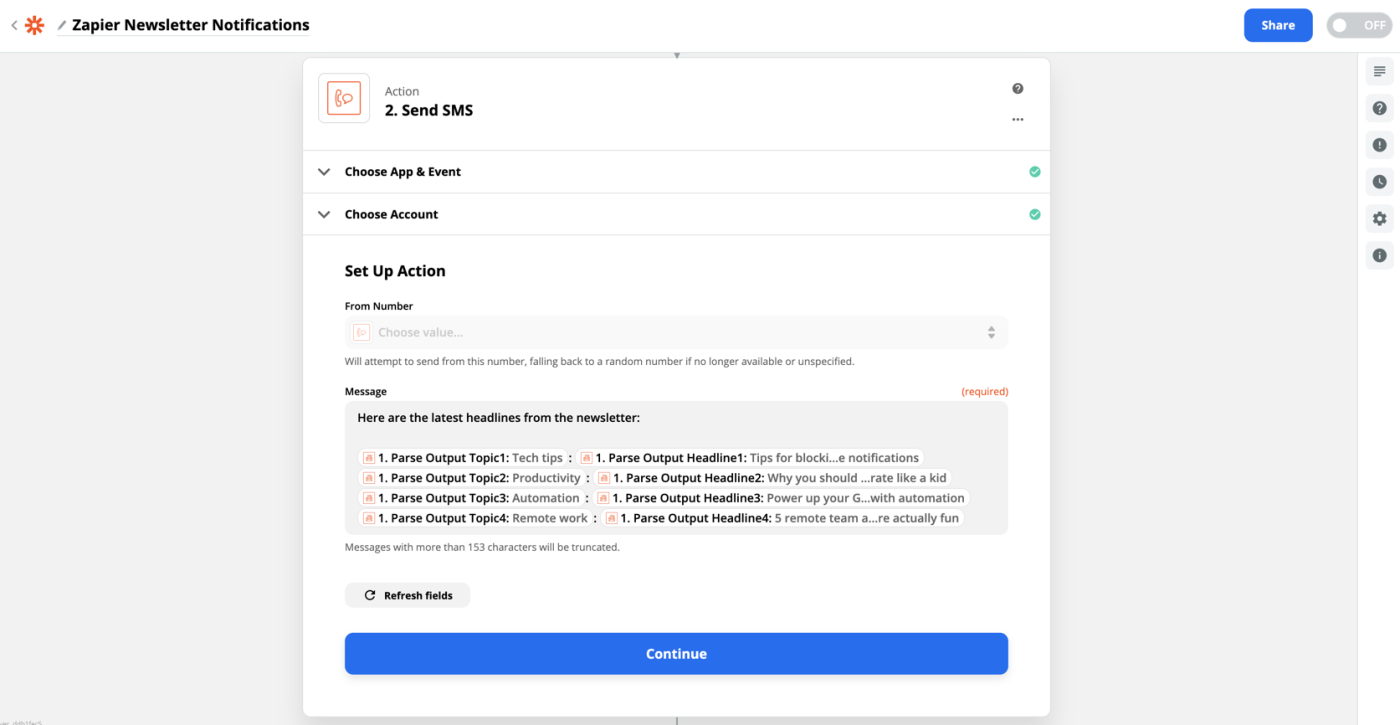
You can then put your email data to work. In the Action step, select the app you want to send your email data to. I wanted to get an SMS notification about the latest headlines, so I picked the SMS by Zapier app's Send SMS action.
To use your email data, click on any of the fields in your Zap’s action, and select any of the values from the Zap’s trigger. Here, I've added the topics and headlines from the name and price from Email Parser to the SMS notifications—you could perhaps add names and emails to your email newsletter, log sales info to rows of a spreadsheet, or use your email data however you want.
Test the Zap to make sure everything works the way you want, turn it on, and you're done!
Check out this guide to learn more about setting up your Zap actions.
Not sure where to send those emails yet? Start saving them with these Zaps.
If you’re like me, you’ve got a lot of emails that you know you want to automate already, but you’re not quite settled on where all of the information needs to be sent yet. In those cases, it can be handy to get a Zap up and running that parses the emails and saves them to a spreadsheet, so that you can come back to the nicely-organized data later on.
Click Try It on one of these recommended Zaps to start saving parsed emails to Google Sheets or Airtable right away, or to set up your own SMS notification for email:
Send information from new Zapier Email Parser emails by SMS
Now that you're parsing your email, learn more ways you can automate that information and put it to work in other apps. Automatically send parsed information to your task or project management app, set up custom notifications, create calendar events, update contacts, and more.
Email's the default way for most apps to send notifications and other info—and can be the best way to automate apps that don't have their integrations. With an email parser and Zapier workflows, your inbox can get your most important emails working for you as soon as they come in—no more copying and pasting from your inbox. If Zapier's email parsing tool doesn't do the trick for you, try one of these best email parsing tools.
Want to make your inbox even more productive? Here are some great Zapier guides to help:
Using Gmail? Check out our guide to 30 of the best Gmail tips, tricks, hacks, and add-ons.
Or, perhaps you need a new email app. Here are 15 of the best email apps, from dozens we've tested as a team.
This article was originally published in October 2018. It was updated in December 2020 by Tyler Robertson, a member of the Zapier staff.
Image Credits: Ocean background photo by Dimitris Vetsikas via Pixabay
